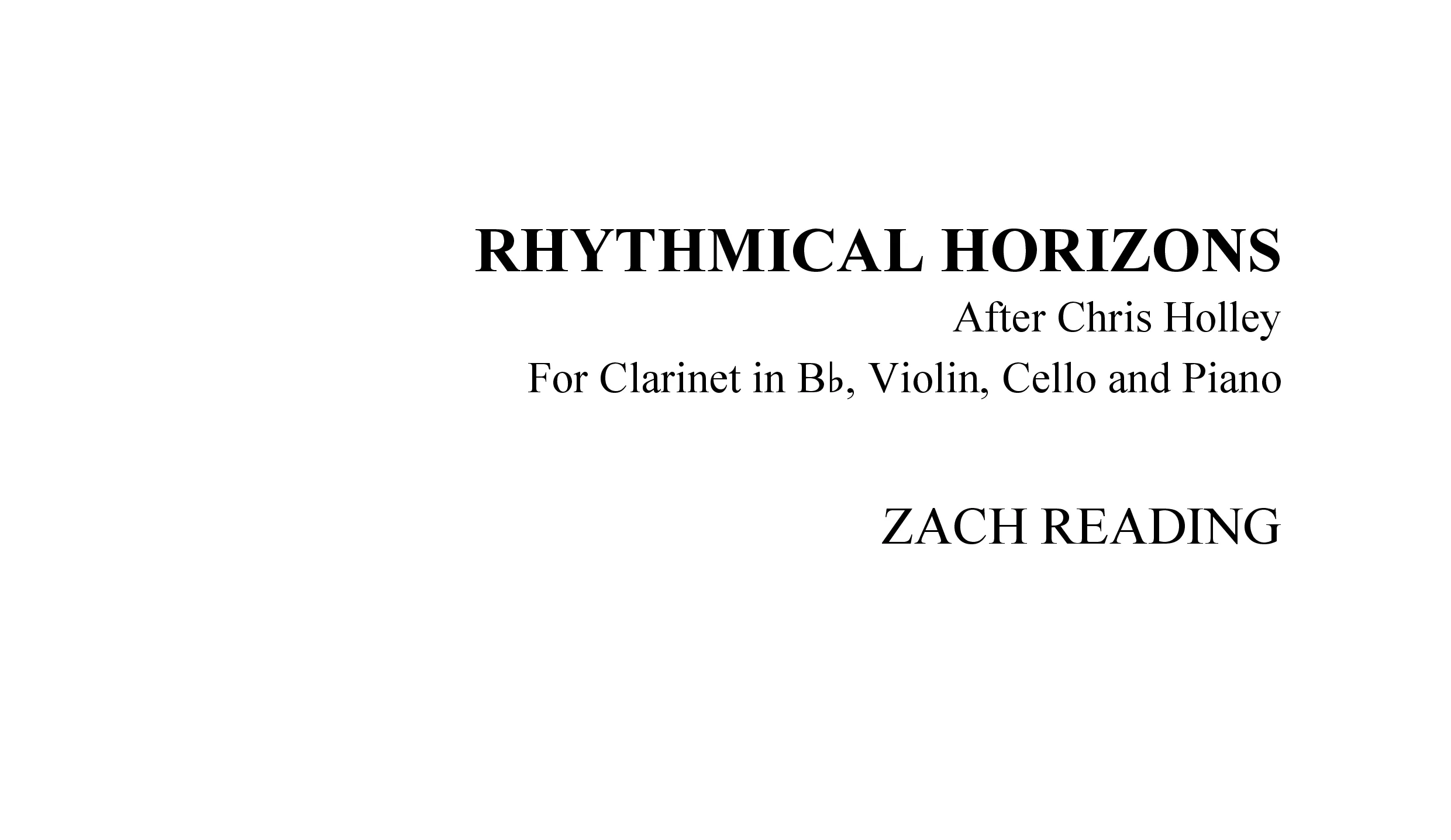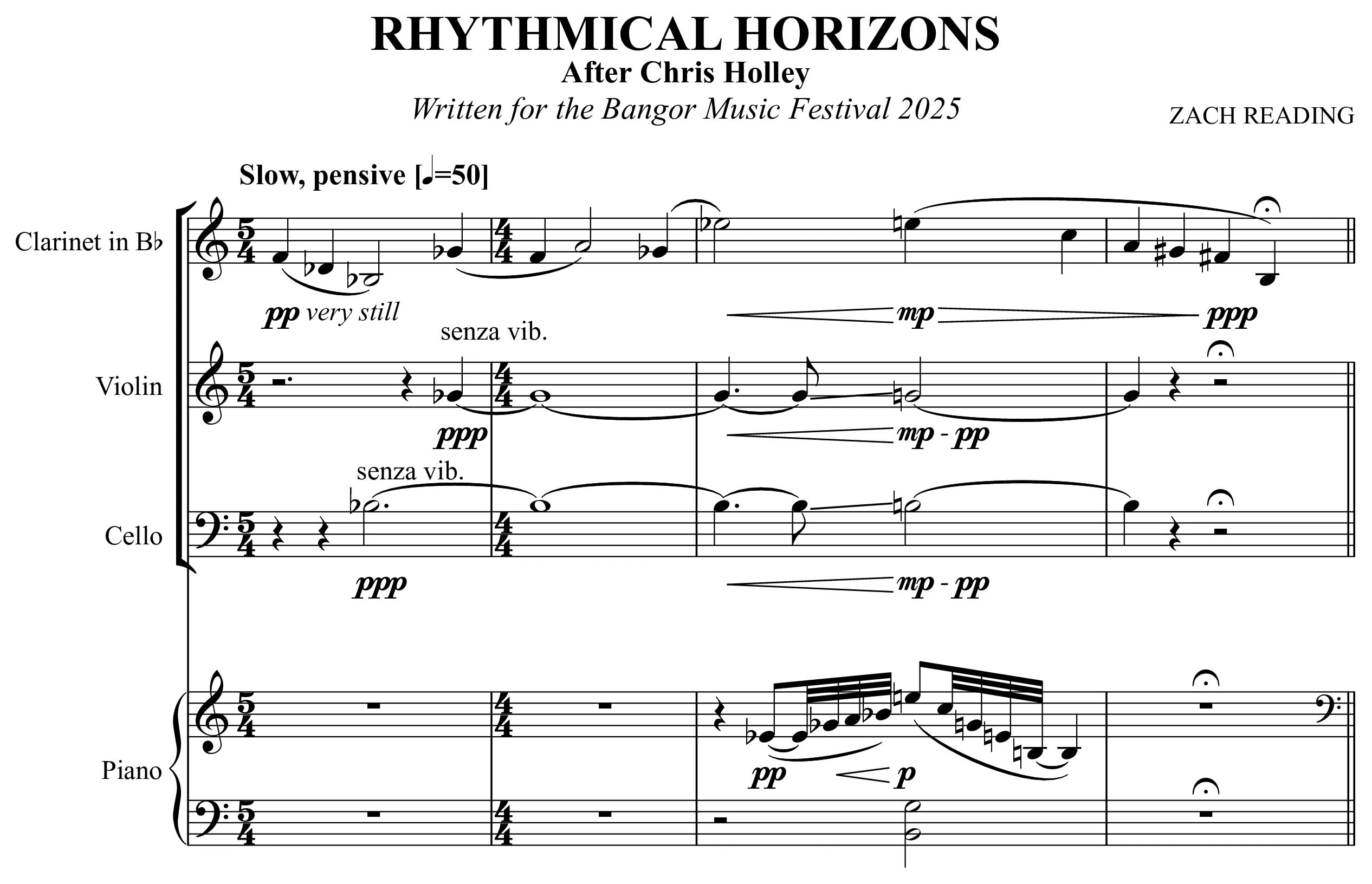

1 / 47
0:00/0:00
Quartet
2025
Cello
Clarinet
Piano
Violin
- Program Notes
Rhythmical Horizons interprets Chris Holley's triptych artwork of the same name by approaching it through two contrasting viewpoints. The piece has two main sections, preceded by a slow introduction that presents much of the key material and sets the mood of the piece; a curious and unsettled atmosphere bubbling with energy and movement.
The first section takes as its inspiration the sprawling, colourful and intense shapes visible in Holley's art and starts with a bold statement of the main thematic idea in octaves between the violin and cello. This idea is full of energy and utilises a riff-like rhythmic pattern, inspired by the song 'Icarus Lives!' by progressive metal band Periphery, with the syncopations punctuated by heavy chords in the piano and clarinet. From this a chorale like idea emerges with a deep, rumbling rhythmic pattern introduced low in the piano. These ideas develop before an explosive repetition of the pattern erupts in the clarinet, violin and viola, who are battling with the previously established pattern again deep in the piano which now is rhythmically offset. The conflict subsides and is replaced by a lighter, more staccato, spikey figure which again is punctuated by syncopated sets of five and three semiquavers. This grows towards another climactic series of syncopated minor chords that shift chromatically before leading to a final repetition of the opening 'riff'.
The second section is much calmer, and takes a view of the paintings as if the viewer has stepped further away and is taking in the canvas as a whole. The cream and off-white backing of the paintings inspires a much more relaxed atmosphere, but one that is still underpinned by a rhythmic pattern introduced by the piano. There is another guitar-influence here in the ascending power-chords in the left-hand of the piano which maintain throughout the section. The sense of flow here is much more gradual and, while there is still tension created by dense harmonies, the music has a sense of timelessness. Eventually, the music rests on an uneasy chord that heralds the start of the coda and a return to the more angular music of the first section. A prolonged build leads to the heavy and rhythmically uneven set of minor chords that finish the piece with something of a resolution via a final hint of the opening idea played at by the clarinet and cello.
- Recording Notes
Commissioned for Bangor Music Festival 2025.
- Performer Credits
- Esme Lewis, Isha Crichlow, Joe Howson, William Clark-Maxwell
- External Links